There’s nothing quite like the sweet, sun-ripened taste of freshly picked strawberries. Imagine stepping onto your balcony, patio, or porch and plucking juicy red berries straight from the plant — no garden bed required! The good news is that strawberries are incredibly easy to grow in containers, making them perfect for anyone with limited space.
Whether you’re a beginner gardener or an experienced grower looking to maximize your harvest, this 6-step guide to planting strawberries in containers will walk you through everything you need to know — from choosing the right varieties to ensuring a bountiful, continuous crop.
Step 1: Choose the Right Strawberry Variety
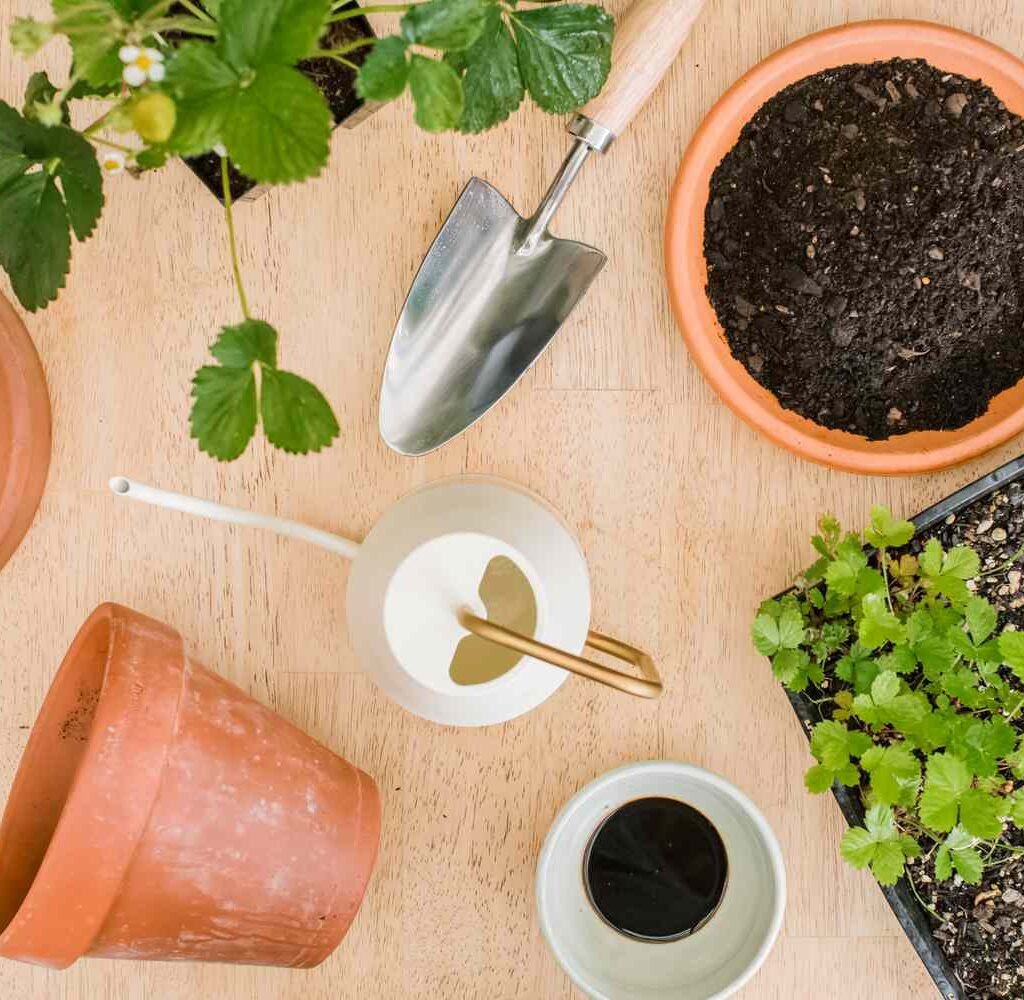
Before you start planting, it’s crucial to select the right type of strawberry for your container garden. Not all strawberries perform the same way — some produce one big crop, while others give you berries all season long.
Types of Strawberries
- June-bearing Strawberries
- Produce one large harvest in early summer.
- Ideal if you prefer a big batch of berries for freezing or making jams.
- Examples: Honeoye, Allstar, Earliglow.
- Everbearing Strawberries
- Produce two to three smaller harvests — one in spring, another in late summer or fall.
- Great for steady snacking throughout the season.
- Examples: Ozark Beauty, Seascape, Quinault.
- Day-neutral Strawberries
- Produce fruit continuously throughout the growing season (as long as temperatures stay between 35°F–85°F or 2°C–29°C).
- Perfect for containers because of their compact growth and reliable yield.
- Examples: Albion, Tristar, Mara des Bois.
For containers, day-neutral and everbearing varieties are your best choice because they keep producing berries without needing a large garden bed.
Step 2: Select the Best Container and Location
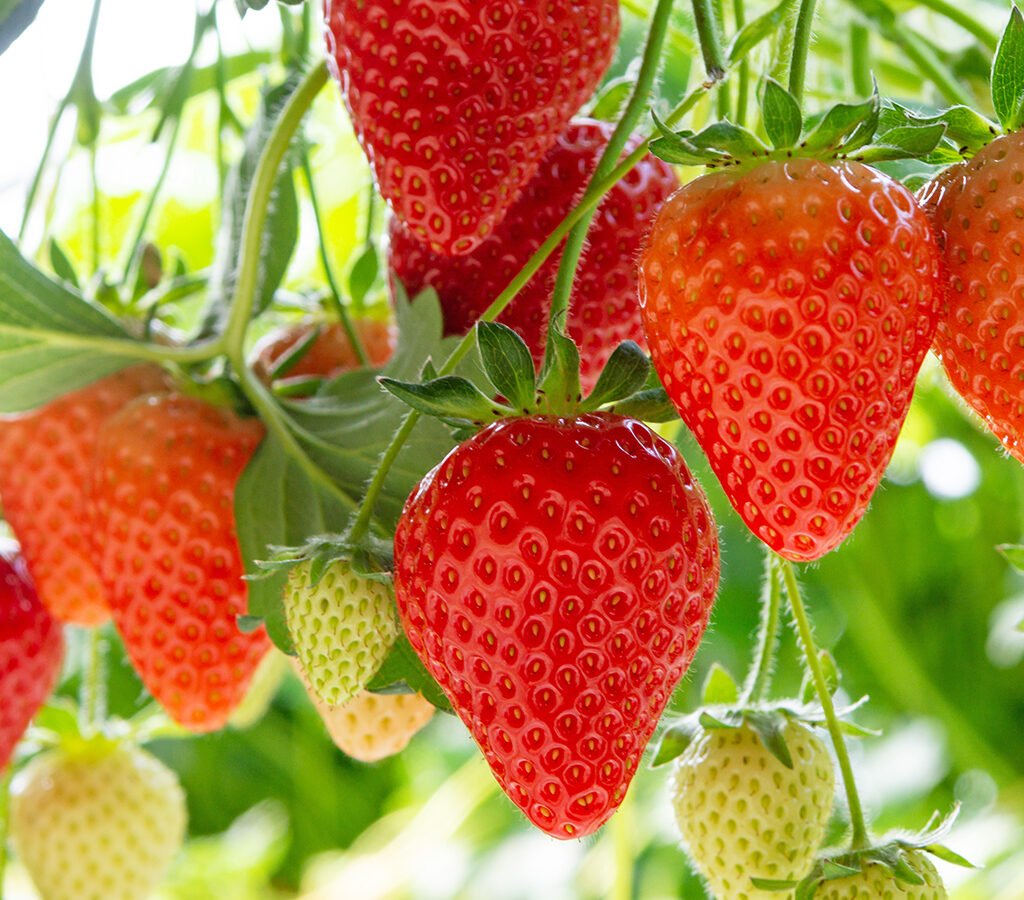
Strawberries have shallow roots, so they don’t need deep containers — but they do need plenty of room to spread their runners and receive sunlight.
Choosing Containers
- Size: Each strawberry plant needs about 8–12 inches of space and a container at least 6–8 inches deep.
- Material: Plastic, ceramic, fabric grow bags, or hanging baskets all work well.
- Drainage: The container must have drainage holes to prevent waterlogging, which causes root rot.
Container Ideas
- Strawberry pots: Tall containers with multiple side holes designed specifically for strawberries — they allow plants to cascade down beautifully.
- Hanging baskets: Perfect for saving space and protecting fruit from pests.
- Window boxes: Great for balconies or ledges, keeping the berries within easy reach.
Best Location
Strawberries thrive in full sunlight (at least 6–8 hours per day).
Place your containers in a south-facing area if possible, or move them around to chase the sun. If you live in a very hot climate, a bit of afternoon shade helps prevent leaf scorch.
Step 3: Prepare the Right Soil Mix
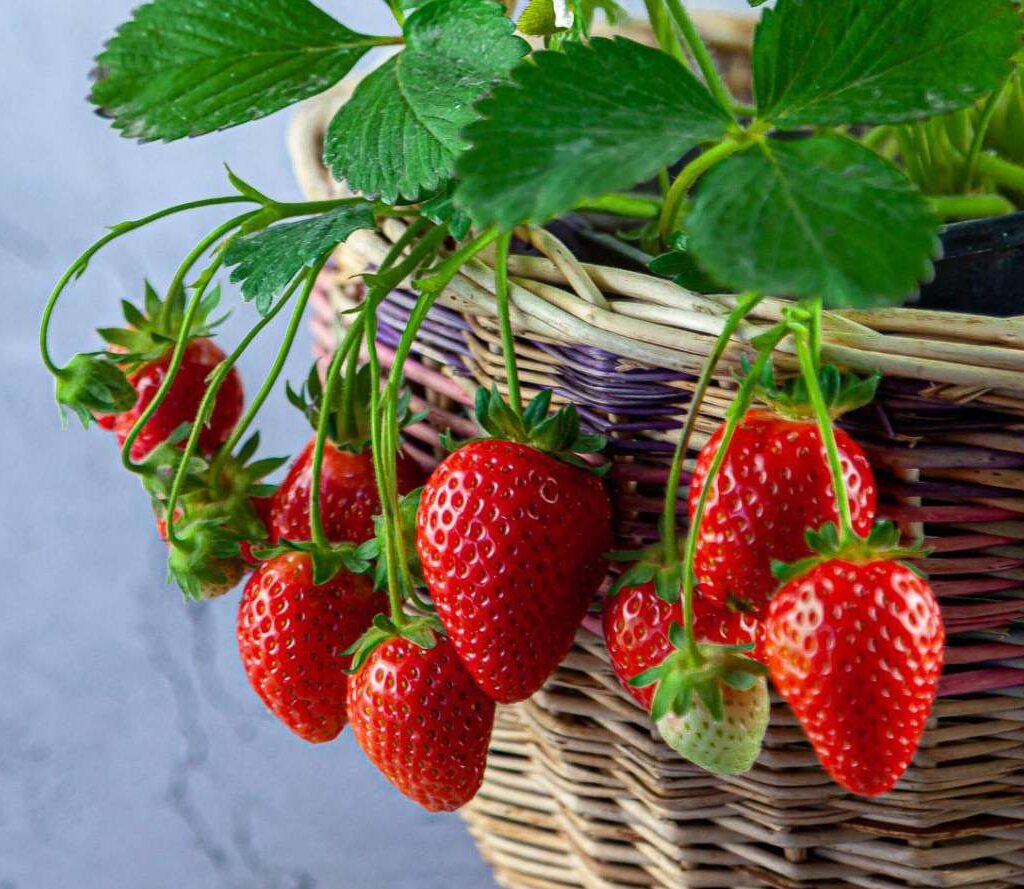
The foundation of a healthy strawberry plant is good soil. Strawberries prefer slightly acidic, well-draining soil rich in organic matter.
Ideal Soil Mix
Create your own mix with:
- 40% potting soil
- 30% compost or well-rotted manure
- 20% coco peat or perlite for drainage
- 10% sand (optional) for extra aeration
The ideal pH range is between 5.5 and 6.5 — slightly acidic but not extreme. You can test this with a simple pH testing kit available at garden stores.
Tip:
Avoid using garden soil directly — it can be too heavy and harbor pests or diseases. Instead, use a high-quality container mix designed for fruits and vegetables.
Step 4: Plant Your Strawberries Correctly
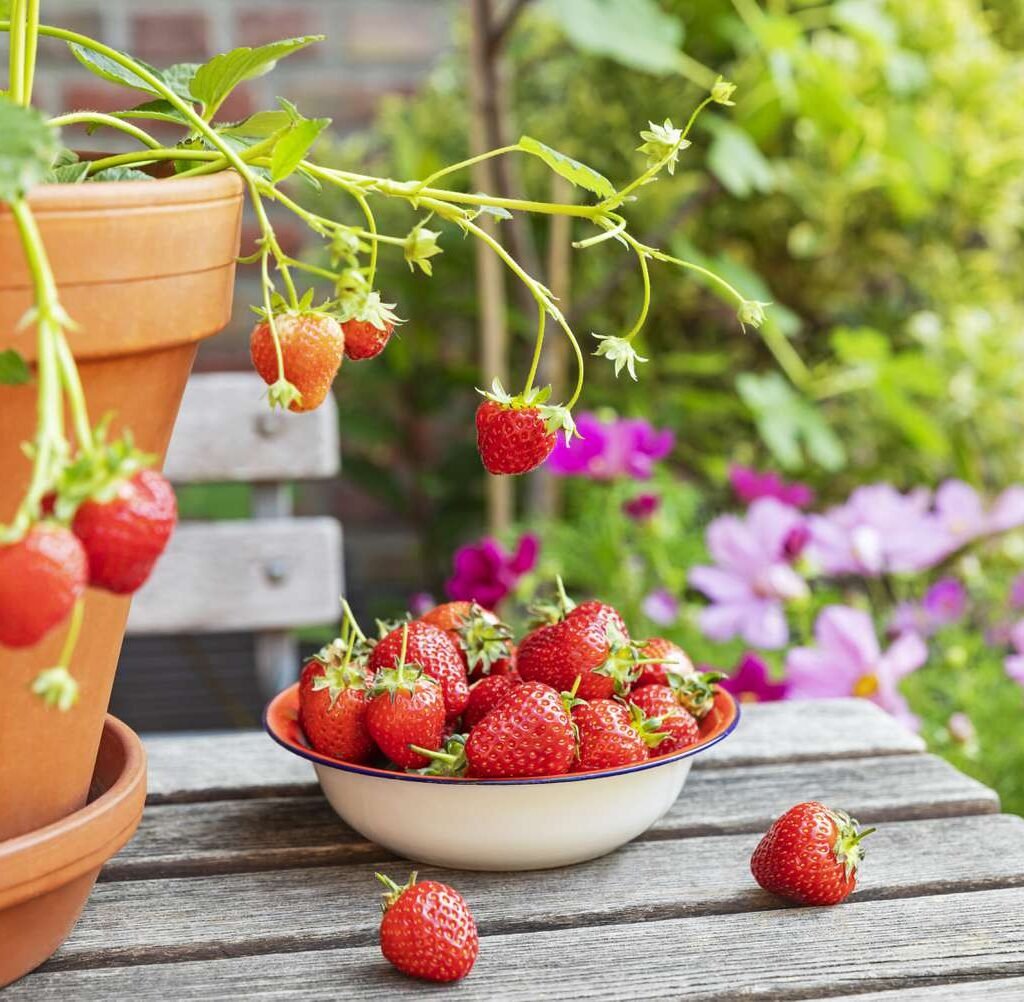
Now that your containers and soil are ready, it’s time to plant your strawberries! Proper planting technique ensures strong roots and healthy growth.
How to Plant Strawberries in Containers
- Fill your container with soil mix, leaving about 2 inches of space from the rim.
- Create a small mound in the center of the container.
- Spread the strawberry plant’s roots gently over the mound.
- Cover the roots with soil — but keep the crown (the central growing point) just above the soil line. Burying it too deep can cause rot.
- Firm the soil lightly and water thoroughly.
If you’re planting multiple strawberries, space them 8–10 inches apart to give each plant enough room to grow and spread runners.
Starting from Bare Roots vs. Seedlings
- Bare-root plants: Cheaper and easy to handle, but require careful planting and patience for initial growth.
- Seedlings or potted plants: Quicker results and easier for beginners.
If you’re using hanging baskets, make sure to let the runners drape over the sides — this not only saves space but also looks beautiful when the berries start to appear.
Step 5: Watering, Feeding, and Maintenance
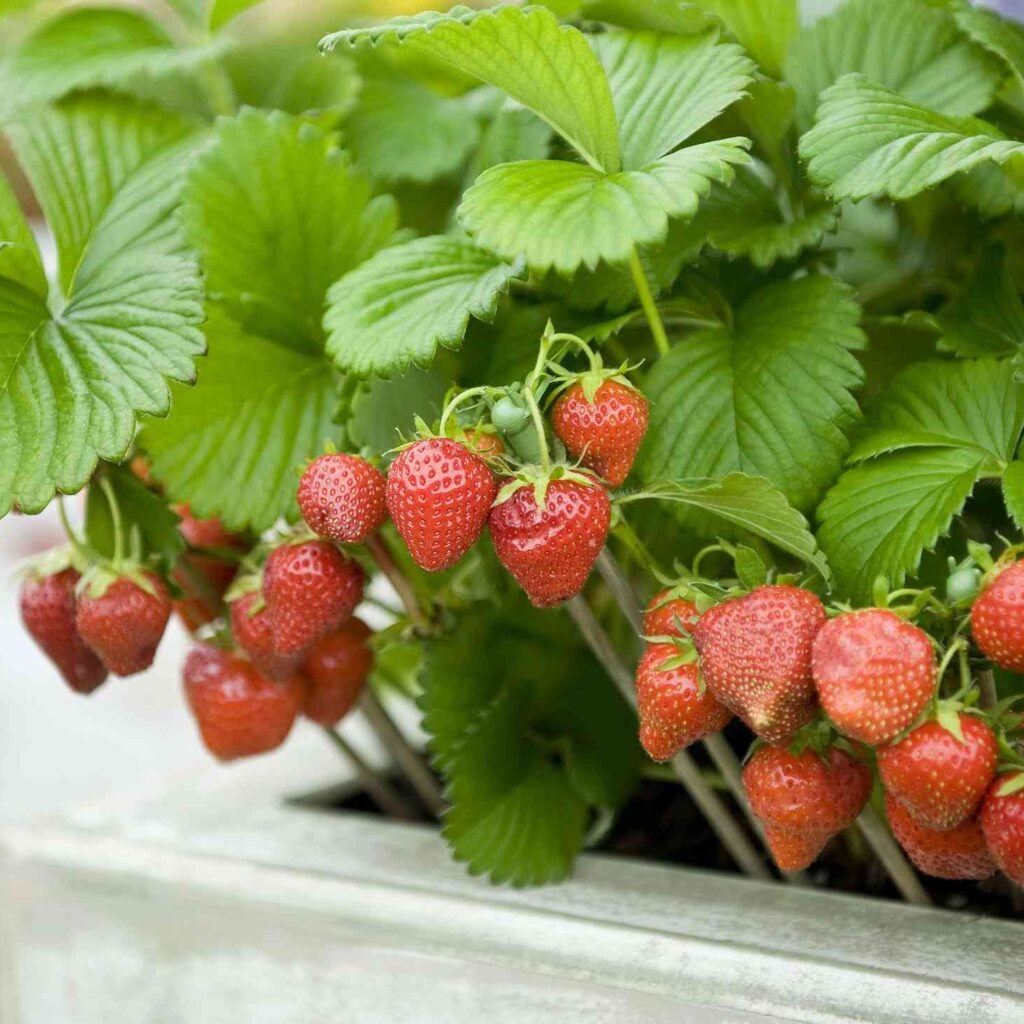
Container-grown strawberries need more attention to watering and feeding than garden ones since containers dry out faster.
Watering Tips
- Water consistently — strawberries prefer moist but not soggy soil.
- Check daily; if the top inch of soil feels dry, water thoroughly until it drains from the bottom.
- Avoid watering directly on the crown to prevent rot.
- During hot summer days, you may need to water twice — morning and evening.
Fertilizing Your Plants
Strawberries are moderate feeders. A balanced feeding routine keeps them productive:
- Use a slow-release organic fertilizer at planting time.
- Every 2–3 weeks, feed with a liquid fertilizer high in potassium and phosphorus (for fruiting).
- Stop fertilizing after mid-summer to allow plants to prepare for dormancy.
You can also apply compost tea or fish emulsion for natural nutrient boosts.
Mulching
Add a thin layer of straw, pine needles, or shredded leaves over the soil surface. Mulching helps:
- Retain moisture
- Keep berries clean
- Prevent weeds
- Maintain even soil temperature
Step 6: Care, Harvest, and Overwintering
Proper care after planting ensures your strawberry plants keep producing sweet fruit year after year.
Pruning and Runner Management
- Remove the first flowers that appear on new plants to encourage root establishment.
- Trim runners (long stems that form baby plants) unless you want to propagate new plants. Too many runners reduce fruit production.
- You can root a few runners in separate pots to expand your strawberry patch later!
Pest and Disease Control
Even in containers, pests can strike. Look out for:
- Aphids and spider mites – Spray with neem oil or insecticidal soap.
- Slugs – Use copper tape around pot edges or natural traps.
- Gray mold (botrytis) – Avoid overhead watering and ensure good airflow.
Harvesting Your Strawberries
- Berries are ready to pick when they’re fully red and firm.
- Gently twist or snip the stem, leaving a bit of it attached to the fruit.
- Harvest every couple of days during peak season to encourage continuous production.
Fresh strawberries are best eaten right away, but you can refrigerate them for 2–3 days or freeze for later use in smoothies and desserts.
Overwintering Your Plants
Strawberries are perennial, meaning they can regrow each year with the right care:
- In cold regions, move pots to a sheltered spot or cover them with burlap or straw mulch during winter.
- In warmer climates, just trim dead leaves and keep soil slightly moist.
- In early spring, remove mulch and start fertilizing again to awaken growth.
Bonus Tips for Container Strawberry Success
- Rotate your containers every few days for even sunlight exposure.
- Replace soil every two years to prevent disease buildup.
- Label your containers with variety names and planting dates.
- Don’t over-fertilize — too much nitrogen results in leafy plants with fewer berries.
- Mix varieties (like day-neutral and everbearing) for a longer harvest season.
- Hand-pollinate indoors by gently brushing flowers with a soft brush if pollinators can’t reach them.
Final Thoughts
Growing strawberries in containers is one of the most rewarding gardening experiences — especially for small-space gardeners. With a few pots, good soil, and plenty of sunshine, you can enjoy baskets of juicy, homegrown strawberries right outside your door.
By following this 6-step guide, you’ll have everything you need to plant, nurture, and harvest strawberries successfully — from choosing the right variety to caring for them year after year. The joy of seeing those first flowers turn into bright red berries makes every bit of effort worthwhile.
So grab your pots, pick your favorite strawberry plants, and start your container strawberry garden today — because nothing beats the taste of freshly picked fruit you’ve grown yourself!
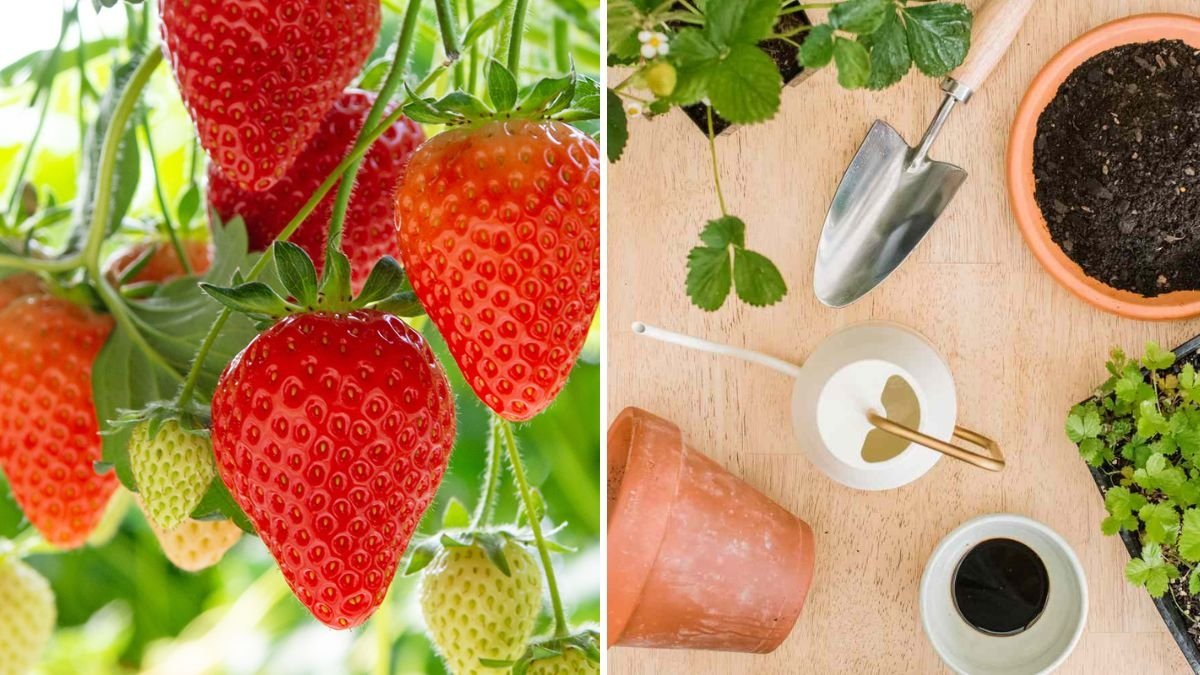




Leave A Comment